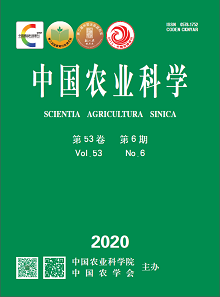【Objective】To determine the content and the variation degree of nutritive and the relationship between the content of various fiber components in different alfalfa varieties. Compare the biological yields of different alfalfa varieties.【Method】Two experiments were conducted. In Experiment 1, selected 16 alfalfa varieties including WL343HQ, WL353HQ, WL354HQ, WL363HQ, WL366HQ, Algonuin, Golden empress, Zhongmu No.3, Zhongmu No.6, Luduo, Luhuang No. 1, Wudi, Lufeng No. 1, Baoding, Zhongyuan804, Aohan and planted on October 2, 2016. Each variety was set up twice and randomly arranged plots. The planting area of each alfalfa variety was 18 m 2 (3 m×6 m) , row spacing was 30 cm, and 10 rows were sown. Harvested at the beginning of flowering on May 23, 2018 and determined the biological yield. In experiment 2,prepared 32 samples and determined the content of nutrients such as crude ash (ASH), crude protein (CP), crude fat (EE), crude fiber (CF),neutral detergent fiber (NDF), acid detergent fiber (ADF) and lignin (ADL) in the dry matter (DM). 【Result】 The results showed that: (1) In alfalfa DM of different varieties, the contents of ASH, NDF, ADF, HCEL, CEL and ADL were significantly different (P<0.01), but the difference of EE content was not significantly (P=0.527). The ASH content of WL363HQ alfalfa was the highest, which was 8.53%. The highest CP content of golden empress alfalfa was 27.19%. The content of EE and CF in baoding 804 alfalfa was the highest, which were 3.01% and 36.69%, respectively. The content of NDF, ADF, CEL and ADL in zhongyuan 804 alfalfa was the highest, which were 57.02%, 42.73, 34.43% and 7.92% respectively. The average values of ASH, CP, EE, CF, NDF, ADF, ADL, CEL and HCEL in alfalfa DM of different varieties were 7.83%, 21.58%, 2.51%, 33.25%, 50.12%, 36.76%, 6.98%, 29.43% and 13.36%, respectively; The coefficient of variation (CV) is between 5.16% and 12.06%. (2) There was a strong correlation between ADF and CEL, ADL content in alfalfa, and the correlation coefficients were 0.9756, 0.9955 and 0.9455. The correlation coefficients between CF and ADF, CEL, ADL content were 0.9114, 0.8849 and 0.9375, respectively. The correlation coefficient between CF (including AIA) and CF was 0.9997. The correlation coefficients between NDF and CEL, ADL, HCEL content were 0.9671, 0.9396 and 0.8736, respectively. The correlation coefficient between ADL (including AIA) and ADL was 0.9989. The correlation coefficients between RFA and ADF, CEL were 0.9826 and 0.9700. (3) There was a strong correlation between relative feeding value (RFV) and NDF content (r=0.9938), which can be used for the estimation of alfalfa RFV: RFV=287.0677-3.4709 NDF (%) n=16 P<0.01. (4) The yields of different alfalfa varieties were different. Baoding alfalfa has the highest yield of crude fat, carbohydrate, hemiculose and cellulose, which were respectively 393.59, 9 308.22, 1 976.32 and 4 208.05 kg·hm -2; The yield of golden empress's crude protein was the highest, which was 2 697.23 kg·hm -2, and the yield of Baoding's digestible energy (DE) was the highest, which was 126 814.45 MJ·hm -2. 【Conclusion】There was a strong correlation between the content of different alfalfa fiber components, and the RFV value of alfalfa was strongly correlated with the NDF component; The yields of different alfalfa varieties are different.









